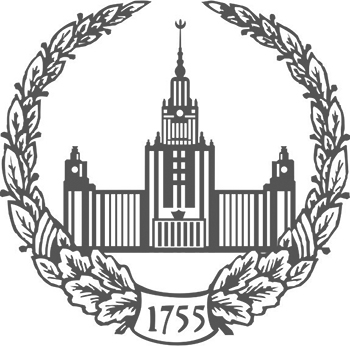ISSN: 2074-8132

ISSN: 2074-8132

Introduction. As a part of paleopathological studies of people inhabiting the Volga-Ural and Southern Ural steppes and forest-steppes in the Bronze Age, it became necessary to study and generalize the available extensive data on diet of this population provided by specialists from various related fields. Indeed, the state of “health” is largely related to what and how a person eats and under what pathogenic burden he lives.
Materials and methods. The paper summarizes main results of archaeological, zooarchaeological, paleobotanical, geochemical, isotope and paleopathological studies.
Results. It has been almost reliably established that animal husbandry was the economic basis of the studied population with elements of hunting and gathering and the absence of crop cultivation. Zooarchaeological studies show that cattle played dominant role and were used both for meat and milk, with some territorial and temporal variations in which of these components was more important. Hunting and fishing played, apparently, a secondary role. It is obvious that the use of plant foods did take place. Researchers agree that the studied population consumed wild plants growing in the steppes and forest-steppes, such as Chenopodium, Amaranthus and a number of others.
Conclusion. Studies of associated disciplines are in many ways interrelated and mutually interpretable, which allows us to create a general picture. At the same time, a number of unresolved issues remain that require further, more detailed analytical developments, including those involving paleopathological data. © 2023. This work is licensed under a CC BY 4.0 license.
Introduction. In this paper, we compared patterns of longitudinal long bone growths of the Late Bronze Age population from Southern Urals, representing pastoral communities, predominantly cattle breeders, and the relatively synchronous agricultural population from Central Asia using standardized z-scores.
Materials and methods. The analyzed sample comes from two cemeteries of the Srubnaya culture in Pre-Urals (Karanayevsky and Chumarovo-1), and two cemeteries of the Srubnaya-Alakul cultural type in Trans-Urals (Nepluyevsky and Yulaly-8). The comparative sample represents data from Gonur Depe, a Bronze Age proto-urban center in Southeastern Turkmenistan. The sample sizes were 32 and 56 individuals respectively, aged between 2 and 12 years old. The measurements of all six long bones and updated reference Maresh standards (mid-20th century, USA) were used to calculate z-scores. The obtained z-scores were analyzed using both parametric methods and nonparametric statistics.
Results. Z-scores for the diaphyseal lengths differed significantly between the two analyzed samples. The distribution of z-scores for the Gonur Depe sample was more noticeably shifted towards lower values. In the Southern Ural sample, 6.7% of children had z-scores no lower than those in the reference group, while in the Gonur Depe sample this value constituted only 0.6%. Z-scores for the upper limb bones in both groups were significantly higher than those for the lower limb bones. In the Southern Ural sample, children under 6 years of age had significantly higher z-scores compared to 9–12-year old children. No such differences were found in the Gonur Depe sample.
Discussion. The pooled Bronze Age sample from Southern Urals showed overall less stunting from the reference group compared to the Gonur Depe sample. This is consistent with the hypothesis of a smaller long bone lengths and shorter stature in agricultural compared to pastoral populations. In both groups, the lower limb bones had lower z-scores compared to the upper limb bones, indicating that growth stunting relative to the reference values is more expressed for the lower limbs.© 2023. This work is licensed under a CC BY 4.0 license.
Introduction. This publication has a twofold aim: (1) to present a probable case of a metabolic disease in a Late Bronze Age child skeleton from the Southern Trans-Urals, and (2) to examine the diagnostic potential of classification tree algorithms for differentiating infantile scurvy and rickets in osteological material.
Materials and methods. The skeleton of a 4–8-month-old child with pathological changes was found in Kurgan 1 of the Nepluyevsky cemetery, attributed to the Srubnaya-Alakul cultural type. The observed pathological changes are consistent with rickets and/or scurvy. Differential diagnosis between these two conditions was performed using classification tree analysis (Statistica 12.0 package), based on 13 parameters and a dataset of 110 paleopathological cases of metabolic disorders (72 cases of rickets and 38 of scurvy). Two classification models were constructed using CHAID algorithm, each employing a different approach to handling missing data. Accuracy, sensitivity, specificity, and positive likelihood ratio were calculated to assess classification quality. In addition, correlation coefficients were computed for all input variables.
Results and discussion. The combination of macroscopic and radiographic features indicates that the child was suffering from a metabolic disorder, most consistent with rickets. The obtained decision trees demonstrate high classification accuracy (93.6%) and a high positive likelihood ratio.
Conclusion. The child from Kurgan 1 represents one of the earliest and the first reliably documented paleopathological case of rickets from the study region. The resulting decision trees show that rickets and scurvy can be differentiated using three features: long-bone deformity and general thickening, and abnormalities on bone underlying growth plates.
Acknowledgements. The article has been written in accordance with the research plans of the N.N. Miklukho-Maklai Institute of Ethnology and Anthropology RAS (Theme No. 5. Human ultrasociality: Biosocial and cross-cultural aspects – R & D No. 124112200079-1) (V.V. Kufterin). The study was conducted under the state assignment of Lomonosov Moscow State University (M.K. Karapetian).
